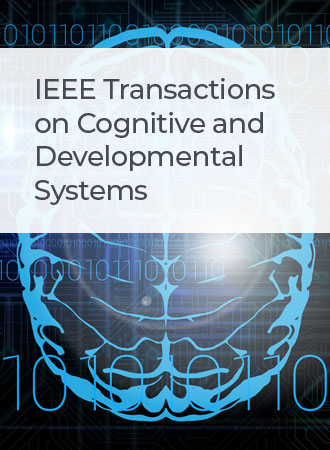深度学习解读镜头背后的自闭症谱系障碍
IF 4.9
3区 计算机科学
Q1 COMPUTER SCIENCE, ARTIFICIAL INTELLIGENCE
IEEE Transactions on Cognitive and Developmental Systems
Pub Date : 2024-04-09
DOI:10.1109/TCDS.2024.3386656
引用次数: 0
摘要
人们越来越有兴趣了解自闭症谱系障碍(ASD)患者基于注意力偏好的视觉行为模式。注意力揭示了自闭症谱系障碍的认知或知觉变异,可作为辅助诊断和干预的生物标志物。基于注意力的 ASD 筛查的机器学习方法的发展前景广阔,但由于需要高精度的眼动追踪器、刺激范围和黑盒神经网络等因素的限制,使其在实际临床场景中并不实用。本研究提出了一个可解释、可推广的框架,用于量化 ASD 患者的非典型注意力。我们的框架利用参与者用标准相机拍摄的照片,以便在资源有限的地区进行实用而灵活的部署。我们的方法强调可解释性和可信度,能自动进行类似人类的诊断推理,将照片与语义上可信的注意力模式联系起来,并为 ASD 专家提供临床证据支持。我们还对域内和域外数据的模型进行了评估,结果表明我们的方法能准确地对 ASD 患者进行分类,并能在不同领域进行推广。我们提出的方法为辅助诊断程序提供了一种创新、可靠、经济高效的工具,它可以成为利用人工智能系统改变 ASD 筛查临床研究的一项重要工作。我们的代码可在 https://github.com/szzexpoi/proto_asd 公开获取。本文章由计算机程序翻译,如有差异,请以英文原文为准。
Deep Learning to Interpret Autism Spectrum Disorder Behind the Camera
There is growing interest in understanding the visual behavioral patterns of individuals with autism spectrum disorder (ASD) based on their attentional preferences. Attention reveals the cognitive or perceptual variation in ASD and can serve as a biomarker to assist diagnosis and intervention. The development of machine learning methods for attention-based ASD screening shows promises, yet it has been limited by the need for high-precision eye trackers, the scope of stimuli, and black-box neural networks, making it impractical for real-life clinical scenarios. This study proposes an interpretable and generalizable framework for quantifying atypical attention in people with ASD. Our framework utilizes photos taken by participants with standard cameras to enable practical and flexible deployment in resource-constrained regions. With an emphasis on interpretability and trustworthiness, our method automates human-like diagnostic reasoning, associates photos with semantically plausible attention patterns, and provides clinical evidence to support ASD experts. We further evaluate models on both in-domain and out-of-domain data and demonstrate that our approach accurately classifies individuals with ASD and generalizes across different domains. The proposed method offers an innovative, reliable, and cost-effective tool to assist the diagnostic procedure, which can be an important effort toward transforming clinical research in ASD screening with artificial intelligence systems. Our code is publicly available at
https://github.com/szzexpoi/proto_asd
.
求助全文
通过发布文献求助,成功后即可免费获取论文全文。
去求助
来源期刊

IEEE Transactions on Cognitive and Developmental Systems
Computer Science-Software
CiteScore
7.20
自引率
10.00%
发文量
170
期刊介绍:
The IEEE Transactions on Cognitive and Developmental Systems (TCDS) focuses on advances in the study of development and cognition in natural (humans, animals) and artificial (robots, agents) systems. It welcomes contributions from multiple related disciplines including cognitive systems, cognitive robotics, developmental and epigenetic robotics, autonomous and evolutionary robotics, social structures, multi-agent and artificial life systems, computational neuroscience, and developmental psychology. Articles on theoretical, computational, application-oriented, and experimental studies as well as reviews in these areas are considered.
 求助内容:
求助内容: 应助结果提醒方式:
应助结果提醒方式:


